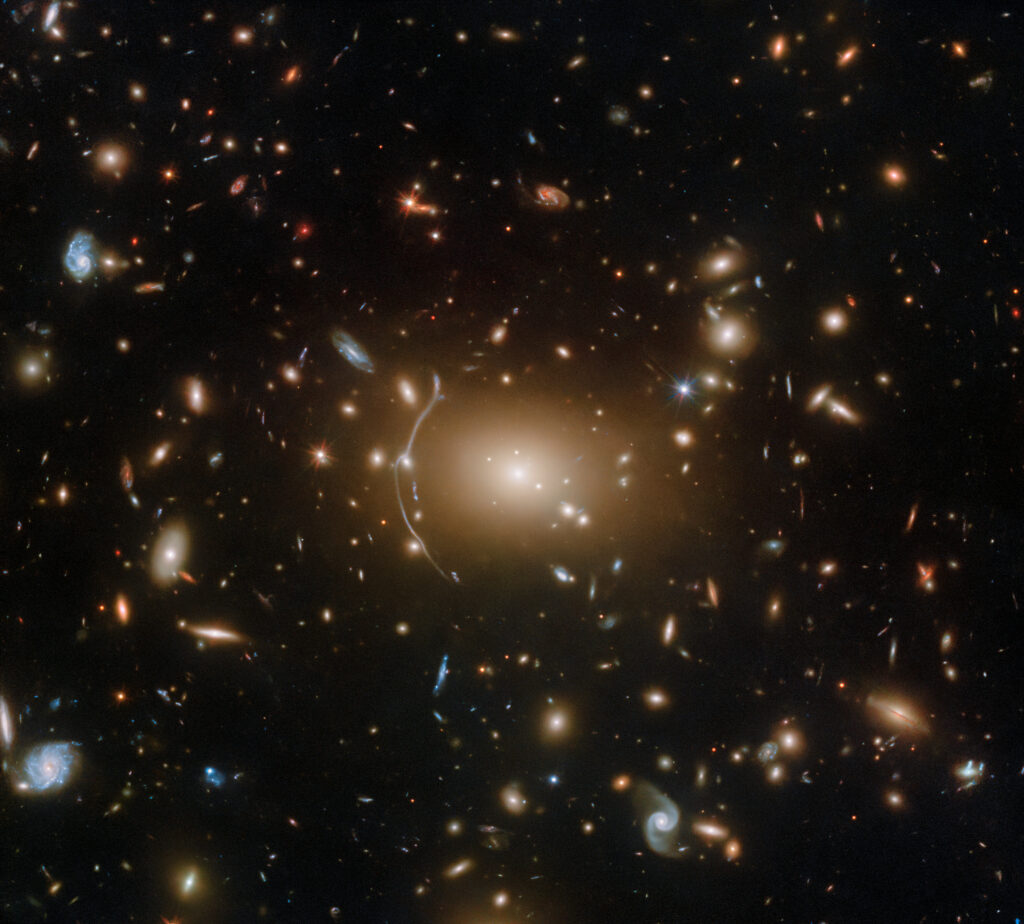In honor of the upcoming Halloween, the Hubble mission support group published an image showing the galactic cluster Abell 611. This bizarre and somewhat web-like structure is located at a distance of 3.2 billion light-years from Earth.

As is the case with other clusters of similar scale, the exact mechanism that ensures the stable existence of Abell 611 remains a mystery to astronomers. The fact is that if you add up the entire visible mass of its constituent galaxies, it simply won’t be enough to hold them together. A similar situation is observed with other galactic clusters, as well as most galaxies. They lack enough visible mass to remain intact.
At the same time, if we take our Solar System, the orbits of the planets can be easily calculated based on their masses. Astronomers don’t need any extra mass to explain its integrity. So why doesn’t this principle work with increasing scale?
The dominant theory is that our universe contains a huge amount of invisible matter, known by the conventional name dark matter. It does not emit light, does not participate in electromagnetic interaction and is inaccessible to direct observation. At the same time, dark matter can have a gravitational effect. This is something that holds the galactic clusters together, preventing them from disintegrating.
Structures like Abell 611 are an ideal natural laboratory for studying dark matter. In the Hubble image, a bright curved line can be seen. This is an optical effect generated by the gravity of the cluster. It distorted the light from a more distant galaxy, giving it such a bizarre appearance. By studying the degree of light deflection, astronomers can calculate the mass of the cluster. These measurements yielded amazing results. Astronomers estimate that about 85% of the mass of our universe should fall on dark matter.
Recall that Hubble recently photographed the NGC 1999 nebula.
According to https://www.esa.int
Follow us on Twitter to get the most interesting space news in time
https://twitter.com/ust_magazine

